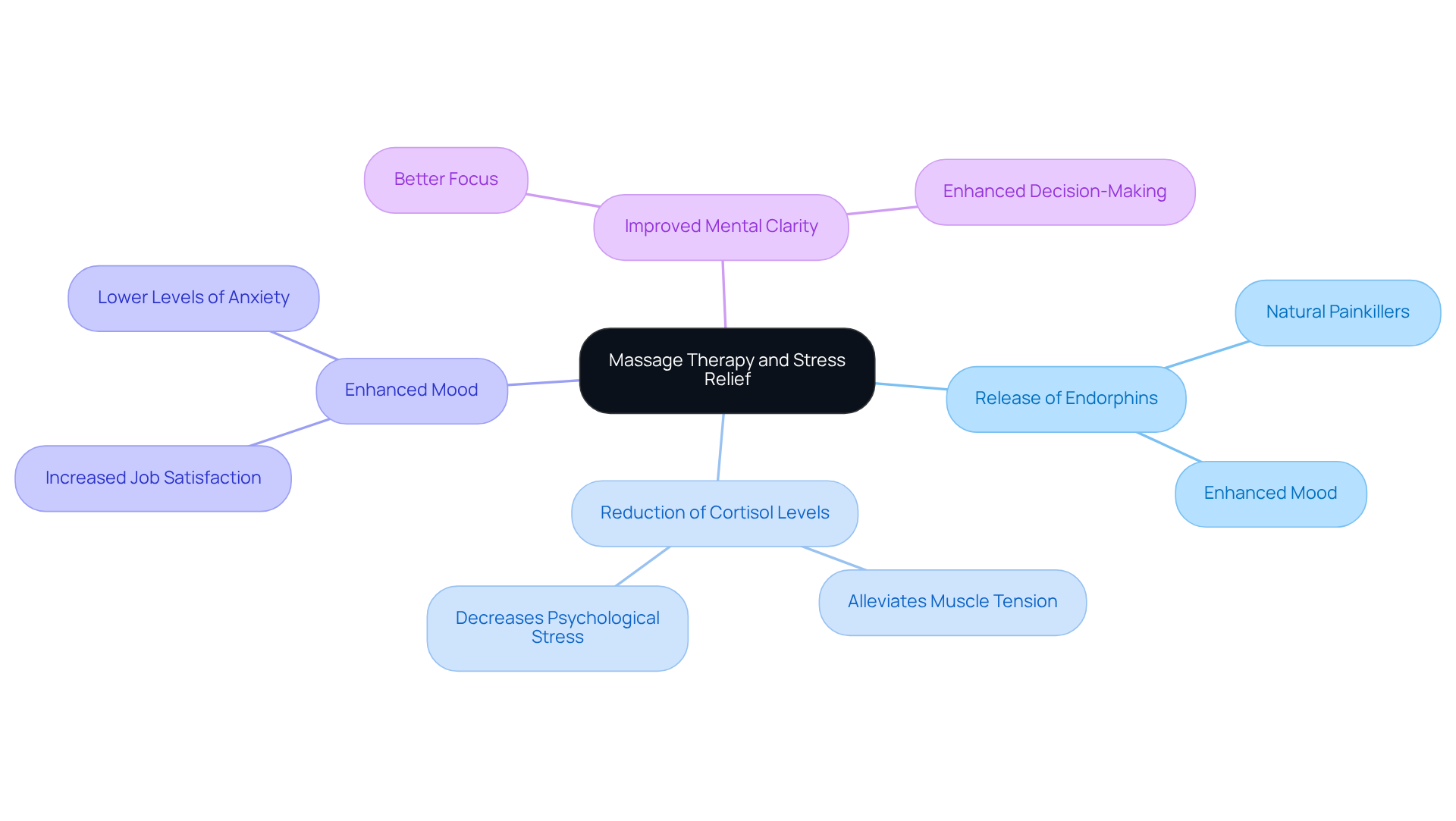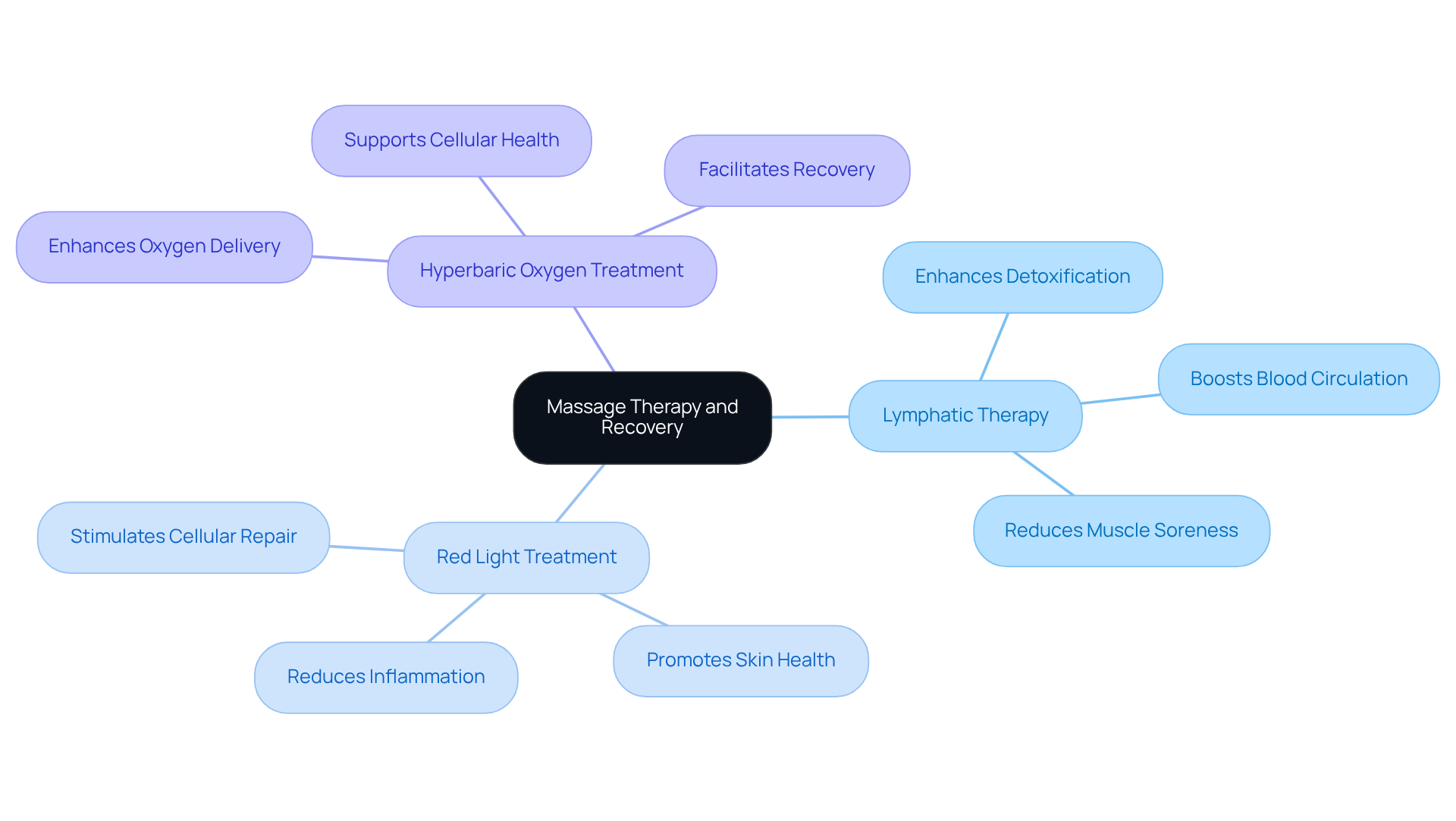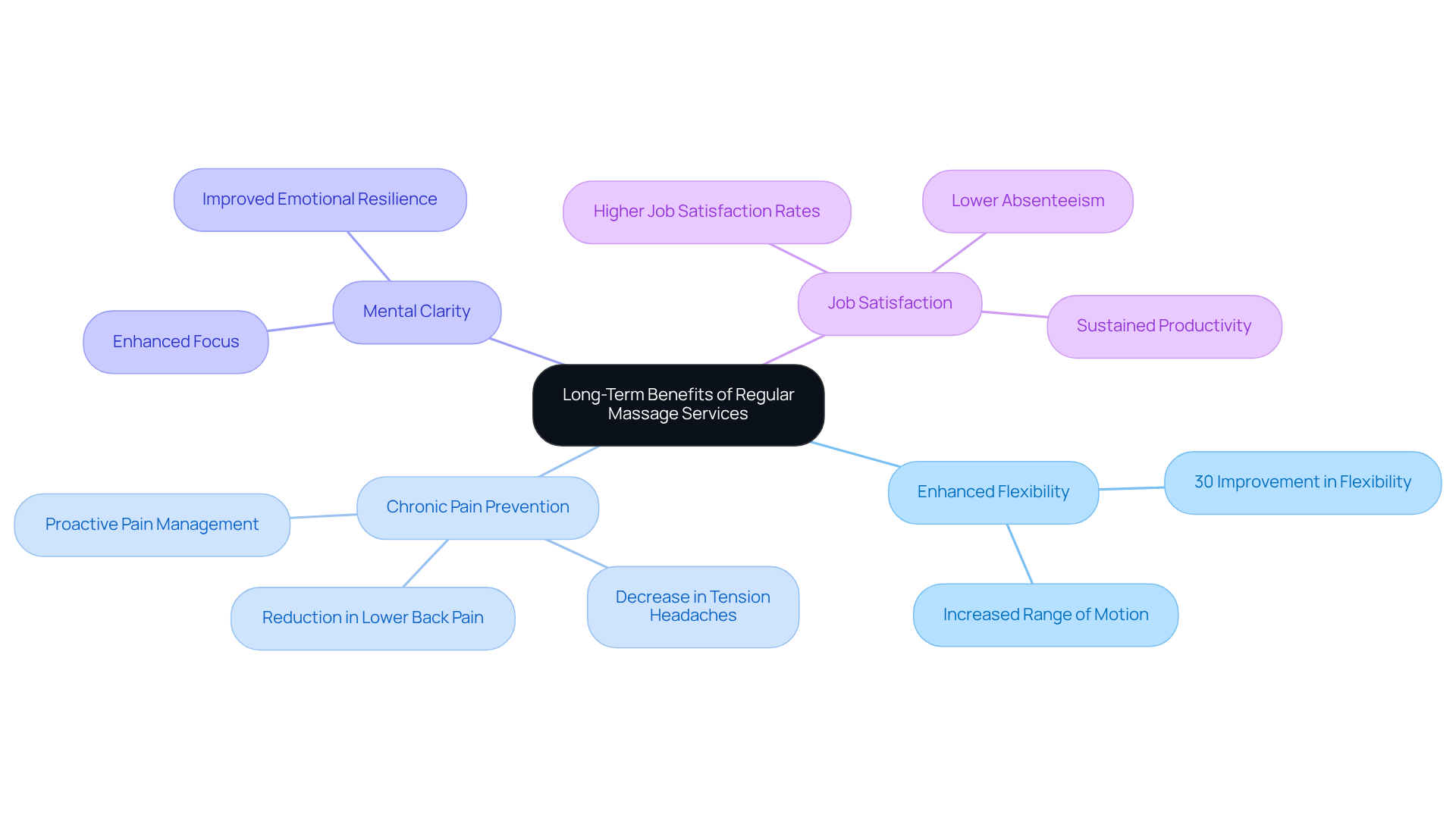Why Massage Services Are Essential for Corporate Executives' Wellness

Overview
Massage services are crucial for the wellness of corporate executives, as they significantly reduce stress, enhance mental clarity, and promote physical recovery—elements that are vital in high-pressure work environments. Regular massage therapy effectively lowers cortisol levels, alleviates muscle tension, and improves overall job satisfaction and productivity. These benefits make massage a vital component of workplace wellness initiatives. By prioritizing massage services, organizations can foster a healthier work environment that supports their executives' well-being and performance.
Introduction
The demanding nature of corporate leadership often results in elevated stress levels and burnout, making wellness strategies more crucial than ever.
- Massage therapy has emerged as a powerful tool for executives, providing immediate relief from tension while also delivering long-term benefits that enhance mental clarity, emotional resilience, and overall health.
- Despite its proven advantages, however, many still question the necessity of integrating such services into corporate wellness programs.
- What if the key to unlocking peak performance lies in the simple act of prioritizing self-care through regular massage?
Understand the Role of Massage Therapy in Stress Relief
Massage treatment is increasingly recognized as a vital method for alleviating stress, particularly among corporate executives. This therapeutic practice effectively stimulates the release of endorphins—natural painkillers—and serotonin, a neurotransmitter known to .
Research indicates that bodywork therapy can lead to a significant reduction in cortisol levels, the primary hormone associated with stress. By relieving muscle tension and promoting relaxation, this therapy not only fosters a sense of ease but also enhances mental clarity and focus.
For executives managing diverse responsibilities and making critical decisions, regular massage services can be a crucial strategy for sustaining mental health and resilience in the workplace. Studies show that employees who engage in bodywork report lower levels of stress and anxiety, correlating with increased job satisfaction and productivity.
This comprehensive approach to wellness underscores the importance of integrating massage services into workplace wellness initiatives, ultimately benefiting both individuals and organizations.

Explore the Science Behind Massage Therapy and Recovery
The science behind bodywork, including massage services, reveals a multitude of advantages for recovery, particularly in high-pressure environments. At Tsavo Wellness, our advanced lymphatic therapy treatments are meticulously designed to enhance detoxification and promote overall health, making them especially beneficial for corporate executives. This treatment not only boosts blood circulation but also improves the delivery of oxygen and nutrients to muscles, facilitating quicker recovery from physical exertion. Moreover, it effectively reduces muscle soreness and stiffness that often result from prolonged periods of sitting or stress-related tension. Research indicates that massage therapy can significantly decrease lactic acid levels in the muscles, a byproduct of strenuous activity that contributes to fatigue.
In addition, our comprehensive body red light treatment offers a non-invasive solution that stimulates cellular repair and regeneration, thereby reducing inflammation and promoting skin health. When combined with hyperbaric oxygen treatment, which enhances oxygen delivery and supports cellular health, these methods work synergistically to . For corporate leaders, who frequently navigate extended hours and elevated stress levels, integrating these advanced treatments into their routine can substantially enhance their physical recovery and overall wellness, empowering them to perform at their peak.

Examine the Long-Term Benefits of Regular Massage Services
Consistent bodywork offers numerous lasting advantages that extend well beyond immediate relaxation. Regular sessions significantly enhance flexibility and range of motion, which are essential for executives often constrained by sedentary work habits. Research indicates that individuals who undergo regular bodywork experience a notable improvement in flexibility, with some studies suggesting advancements of up to 30% over time. This enhancement is crucial in preventing chronic pain conditions, such as lower back pain and tension headaches, which are prevalent among office workers.
Experts emphasize that bodywork not only alleviates current discomfort but also plays a proactive role in preventing chronic pain. Case studies have demonstrated that office employees incorporating regular bodywork into their routines report a significant reduction in chronic pain symptoms, leading to enhanced overall well-being.
Moreover, the combined effects of bodywork enhance mental clarity and emotional resilience, significantly reducing the likelihood of burnout. Workers engaged in regular bodywork therapy report and lower absenteeism rates, which are vital for sustaining productivity in high-pressure environments. For corporate executives, the long-term benefits translate into improved performance and health, which makes a compelling case for the integration of massage services into corporate wellness strategies.

Conclusion
Integrating massage services into the wellness routines of corporate executives is not merely beneficial; it is essential for cultivating a healthier, more productive work environment. By alleviating stress and enhancing mental clarity, massage therapy stands out as a powerful tool that supports both individual well-being and organizational success.
This article underscores several key benefits of massage therapy, highlighting its effectiveness in:
- Reducing cortisol levels
- Promoting recovery from physical exertion
- Preventing chronic pain
Regular sessions can lead to improved flexibility, emotional resilience, and job satisfaction—all crucial for executives navigating high-pressure situations. The scientific evidence supporting these benefits emphasizes the necessity of prioritizing wellness strategies that incorporate massage services.
Ultimately, embracing massage therapy as a regular practice empowers corporate leaders to navigate their demanding roles with greater ease and effectiveness. By investing in their health through consistent bodywork, executives can enhance their performance, mitigate burnout, and contribute to a more vibrant workplace culture. The time to prioritize wellness through massage services is now; the benefits extend far beyond the treatment room, positively impacting both personal health and organizational productivity.
Frequently Asked Questions
How does massage therapy help with stress relief?
Massage therapy helps relieve stress by stimulating the release of endorphins and serotonin, which enhance mood and act as natural painkillers. It also reduces cortisol levels, the primary hormone associated with stress.
What are the physical benefits of massage therapy?
The physical benefits of massage therapy include relieving muscle tension, promoting relaxation, and enhancing mental clarity and focus.
Why is massage therapy particularly important for corporate executives?
For corporate executives, regular massage therapy can be a crucial strategy for sustaining mental health and resilience, as it helps manage diverse responsibilities and critical decision-making.
What impact does massage therapy have on employee well-being?
Employees who engage in massage therapy report lower levels of stress and anxiety, which correlates with increased job satisfaction and productivity.
How can organizations benefit from incorporating massage therapy into their wellness initiatives?
Integrating massage therapy into workplace wellness initiatives can benefit both individuals and organizations by improving employee well-being, reducing stress, and enhancing overall productivity.


